Nankai University finds new energy-saving and green refrigeration method
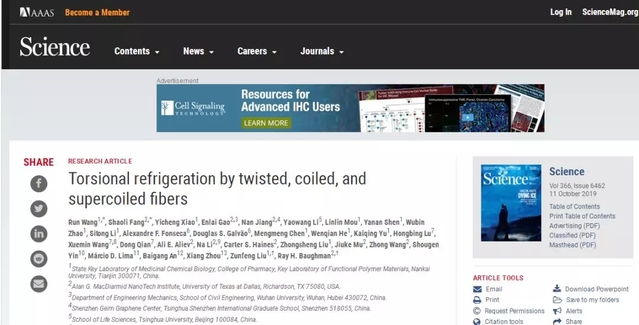
Researchers are constantly struggling to find more efficient, energy-saving and green portable refrigeration methods. A research project by an international joint research team of scientists from Nankai University and Texas State University at Dallas was published in the Oct 11 online edition of Science announcing a new flexible refrigeration strategy: Torsional Refrigeration.
The team found that changing the internal twist of a unit’s fibers can achieve refrigeration. The torsional refrigeration made by this method shows promise due to its higher refrigeration efficiency, smaller size and ability to make use of a variety of common materials such as natural rubber, fishing line and nickel-titanium alloy.
The discovery comes from joint research by Professor Liu Zunfeng’s team from the College of Pharmacy of Nankai University, the Key Laboratory of Medicinal Chemistry Biology and the Key Laboratory of Functional Polymers, and Professor Ray H. Baughman’s team from Texas State University in Dallas. Professor Baughman has also been a lecturer in Nankai University’s Yang Shixian Lecture series. Liu and Baughman are the co-authors of the paper, and Nankai University is the first institute.
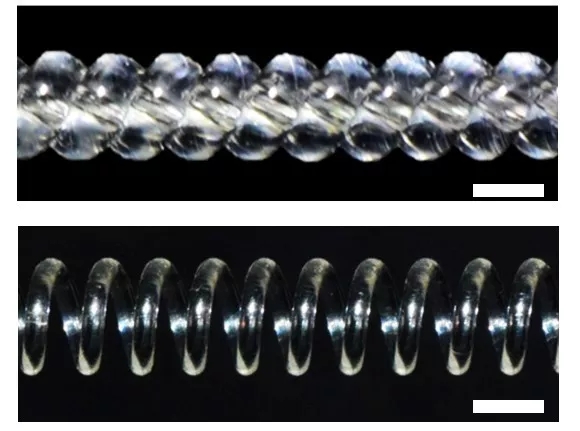
Electric Energy Saving and Cost Reducing
According to data from the International Refrigeration Research Institute, the world's energy consumption of air conditioning and refrigeration accounts for about 20% of total global energy consumption. Most refrigeration today uses the principle of air compression, and its Carnot efficiency is generally less than 60%. The gas released by the traditional refrigerator during the refrigeration process is adding to global warming. As demand for refrigeration increases, it is imperative to explore new refrigeration theories and solutions to further improve refrigeration efficiency, reduce costs and minimize the size of refrigeration equipment.
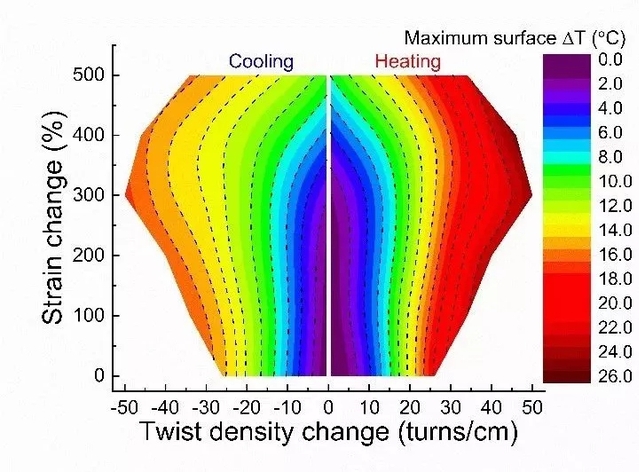
The temperature of stretched rubber rises and is reduced as the rubber shrinks. This phenomenon in the refrigeration industry is called Elastic Thermal Refrigeration. Other solid-state technologies include new solutions such as electrothermal refrigeration, magnetocaloric refrigeration, and use of nickel-titanium memory shape materials. However, the Carnot efficiency of these refrigeration technologies does not exceed that of air compression refrigeration technology.
Natural rubber-based Elastic Thermal Refrigeration was discovered as early as the first decades of the 19th century. However, in order to obtain a better refrigeration effect, it is necessary to stretch the rubber to a great extent in advance. In Torsional Refrigeration technology, the problem can be solved through untwisting. “Preliminary experiments have confirmed that Torsional Refrigeration technology can achieve a Carnot efficiency of 67%. This means that by using ordinary materials such as rubber and fishing lines we can expect to achieve higher Carnot efficiency, saving energy and reducing the cost of refrigeration,” said Professor Liu.
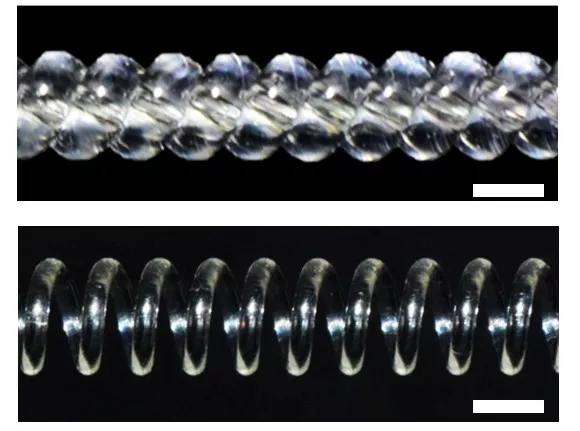
Reverse Torsional Refrigeration Effect and the Torsional Refrigeration Color Change
Under normal circumstances, Torsional Refrigeration using fishing lines works because the temperature rises when the line stretches, and drops when it shrinks.‘By using opposite twist and spiral directions, we can achieve stretching refrigeration. This phenomenon is very peculiar,’said Professor Baughman.
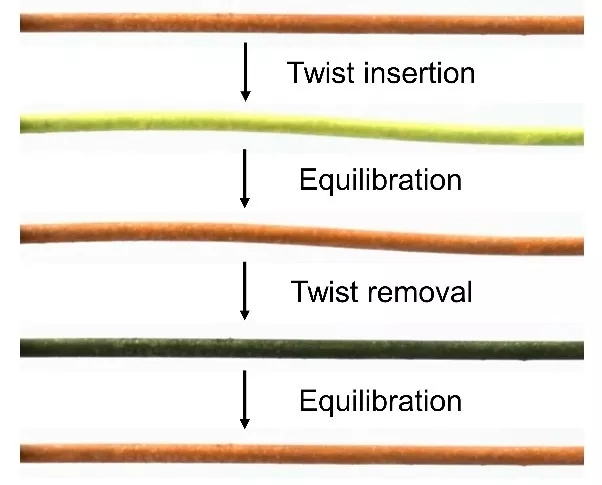
The fiber is twisted and wound into a spiral, and if the twisting direction of the fiber is opposite to the prepared spiral direction, a ‘reverse spiral’ can be made. Unlike the conventional Torsional Refrigeration effect, this ‘reverse spiral’ structure of rubber elastomers and fishing lines cools down under tension. This novel phenomenon is called the Reverse Torsional Refrigeration effect.
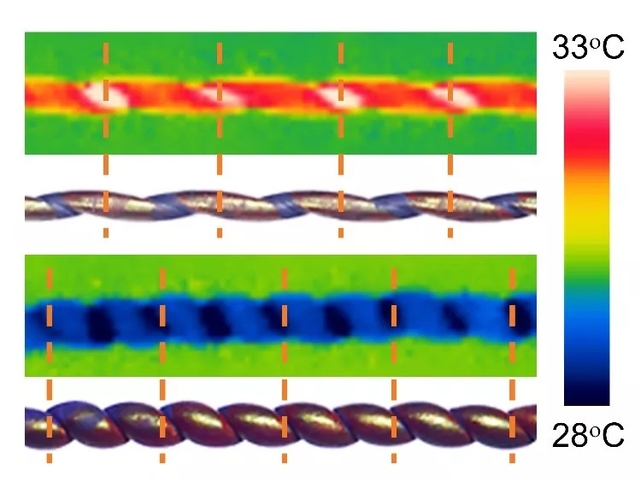
Other participants in the research included Wuhan University, Georgia Southern University, Tsinghua University Shenzhen International Graduate School, the Linde Research Center in the United States, Brazil Campinas State University, Tianjin University of Technology, Liaoning University of Science and Technology, and China Pharmaceutical University.
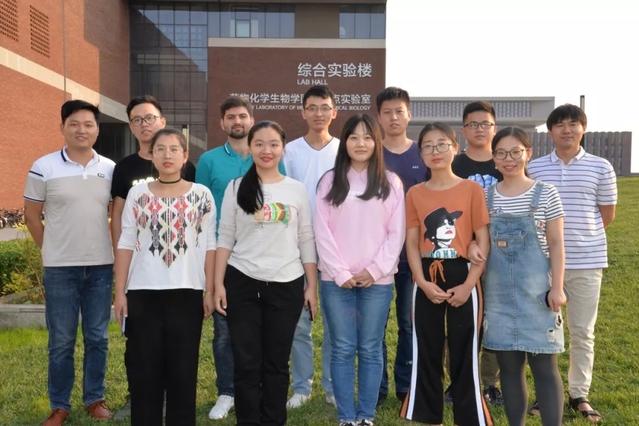

Copyright ©
Tianjin Municipal Government. All rights reserved. Presented by China Daily.
京ICP备13028878号-35

